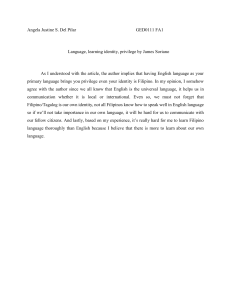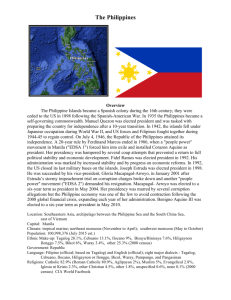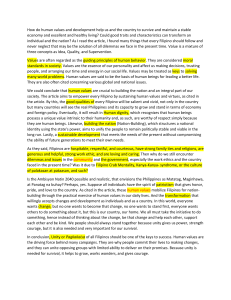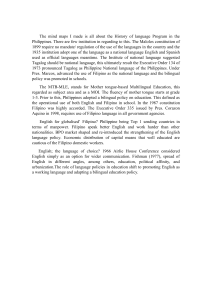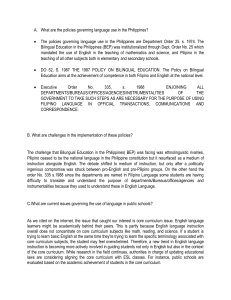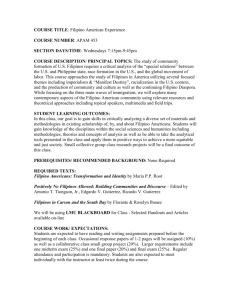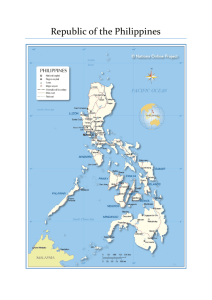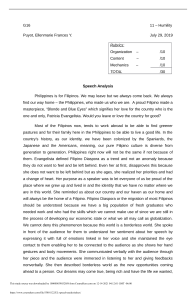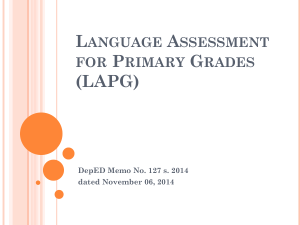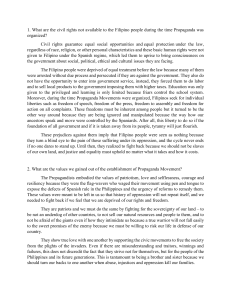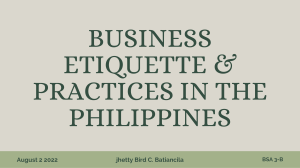Introducing the Philippines Culture A tool for employers and
advertisement
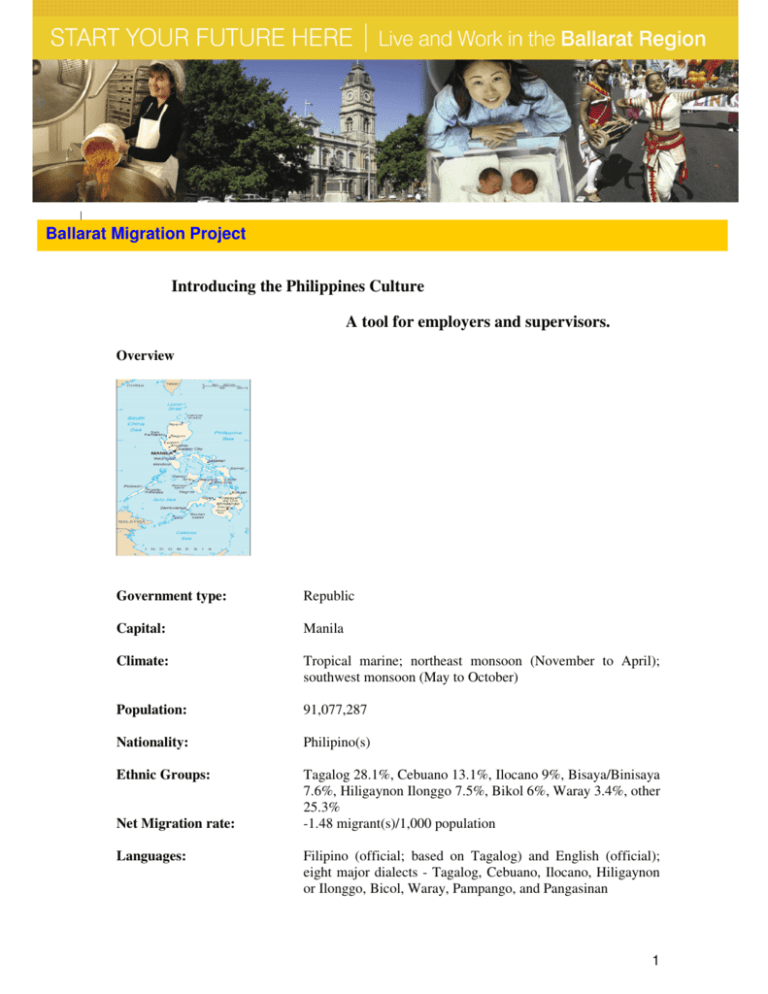
Ballarat Migration Project Introducing the Philippines Culture A tool for employers and supervisors. Overview Government type: Republic Capital: Manila Climate: Tropical marine; northeast monsoon (November to April); southwest monsoon (May to October) Population: 91,077,287 Nationality: Philipino(s) Ethnic Groups: Tagalog 28.1%, Cebuano 13.1%, Ilocano 9%, Bisaya/Binisaya 7.6%, Hiligaynon Ilonggo 7.5%, Bikol 6%, Waray 3.4%, other 25.3% -1.48 migrant(s)/1,000 population Net Migration rate: Languages: Filipino (official; based on Tagalog) and English (official); eight major dialects - Tagalog, Cebuano, Ilocano, Hiligaynon or Ilonggo, Bicol, Waray, Pampango, and Pangasinan 1 Industries: Electronics assembly, garments, footwear, pharmaceuticals, chemicals, wood products, food processing, petroleum refining, fishing. Religion: Food: Roman Catholic 80.9%, Muslim 5%, Evangelical 2.8%, Iglesia ni Kristo 2.3%, Aglipayan 2%, other Christian 4.5%, other 1.8%, unspecified 0.6%, none 0.1% When you interrupt a Filipino during a meal, he or she will feel obliged to invite you to join in. This offer is made only for the sake of politeness; just thank the person and decline, insisting that you have already eaten. At any social event where food is being served, allow the host to ask you several times to sit down. In this culture, appearing overly eager to begin eating is perceived as a sign of greed and vulgarity. Before eating, wait for the host to initiate these proceedings. A fork and spoon are the standard utensils. Keep the fork in your left hand and use it for placing food onto the spoon, which should be held in your right hand. Hierarchy: Formality: For both business meetings and social occasions seating arrangements are based on the, hierarchy. Consequently, it's recommended that you wait to be seated. There is a prevailing belief that a person's clothing indicates his or her social position and relative success. As a visitor, you should dress conservatively until you are certain of the degree of formality expected. Standard attire for men includes suits with either open-neck white shirts or shirts with ties. White, long-sleeved blouses and dark suits or skirts are the best options for female business travelers, particularly in the early stages of a visit. Skirts should be knee-length, while necklines should remain conservative. For women, pants or pantsuits in classic styles can be acceptable, too. Never refer to your host's wife as the “hostess.” In the Philippines, “hostess” is another word for prostitute. Communication styles: It's recommended that you break eye contact several times in the course of a conversation. When you look at a Filipino too intently, it is often interpreted as 'gawking' rather than a sign of attentiveness. Make an effort not to be too direct when communicating with Filipinos. You'll find that people here will be more receptive to an indirect approach. 2 People without a professional title should be addressed in English, with courtesy titles such as “Mr.”, “Mrs.” or “Miss”, followed by their surnames. There is not supposed to be physical contact between men and women in public. Rather than initiating a handshake, men should wait for a Filipino woman to extend her hand. Approach to time: Business travelers are expected to be on time for all appointments. Although Filipinos may not arrive exactly on time, you probably won't be subjected to a long wait. In the Philippines the concept of time is very different from that of Western countries, as is generally so in Asia. The mañana -attitude is revealed in the tendency to put off till tomorrow what can be done today. For example negotiations often start late and can last long without any limits of time. However, among the well-educated and businessminded modern Filipino businessmen, the mañana-concept is not valid any more and it seems to be losing ground elsewhere in society, too. Business Etiquette: Appointments can be scheduled up to one month prior to your arrival in the Philippines. Mid-mornings or mid to late afternoons are usually the best times for appointments This information is a guide only. All migrants are individuals with unique backgrounds and experiences. 3
